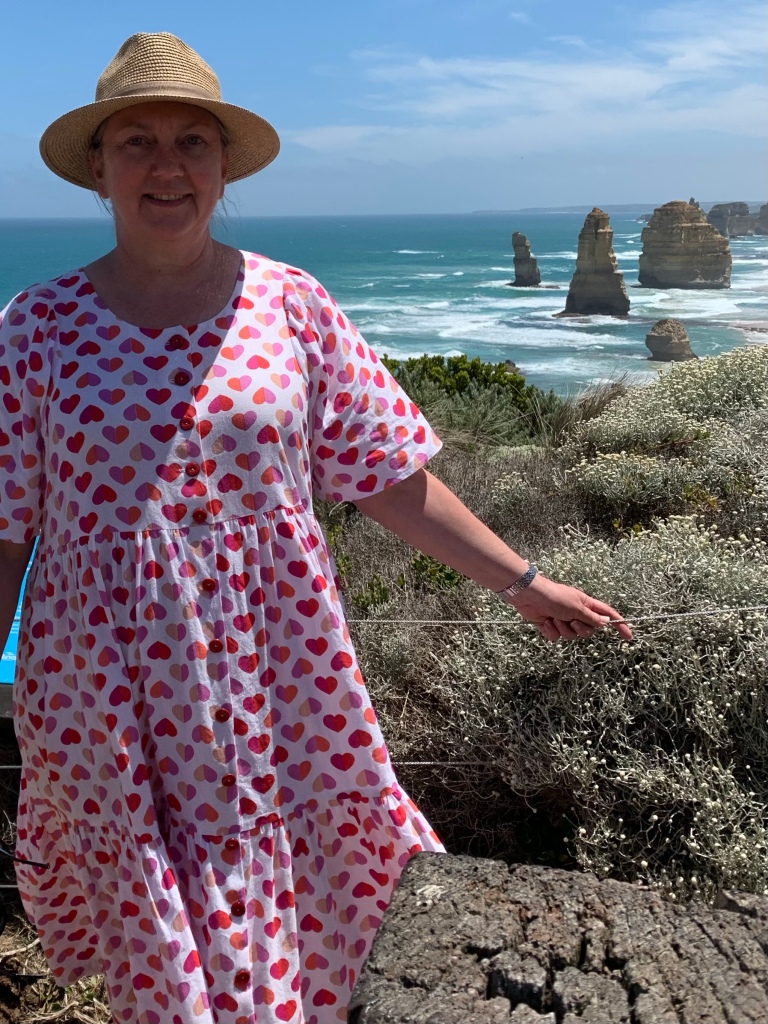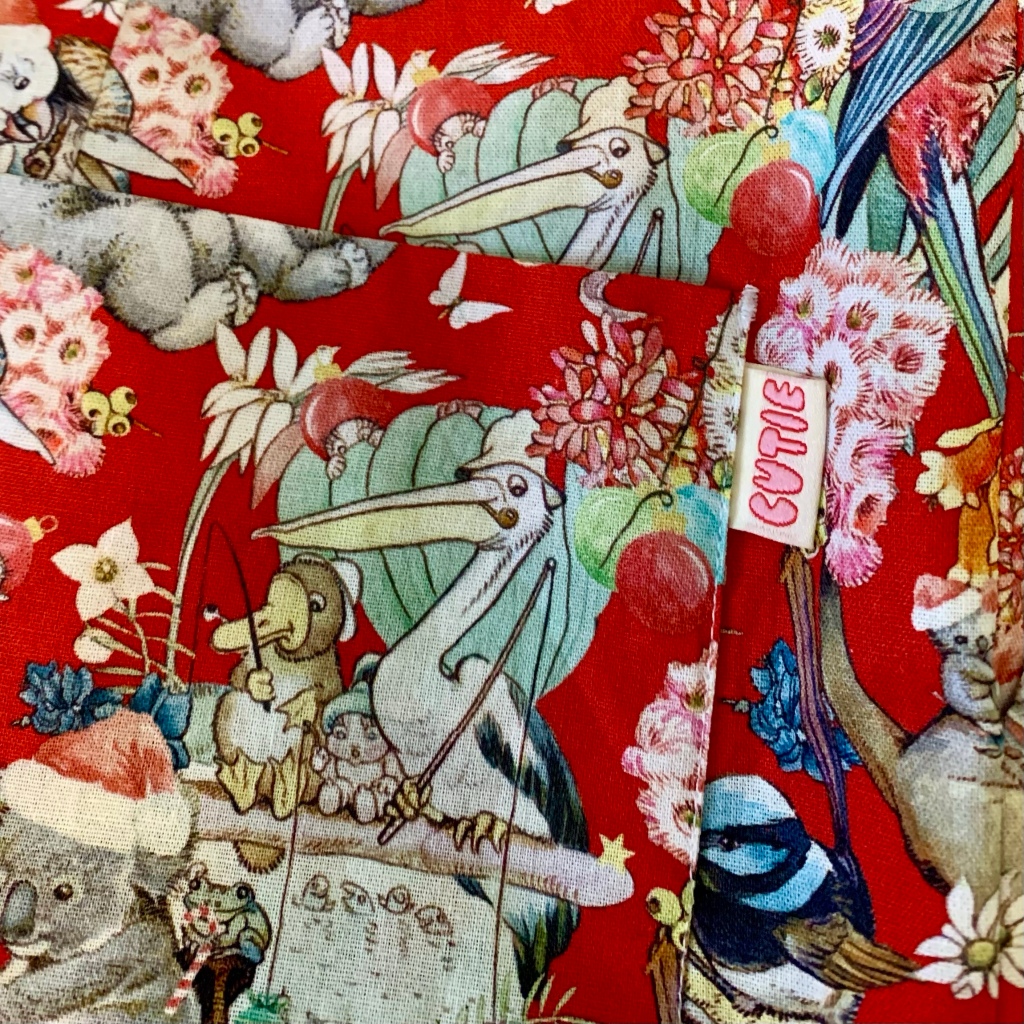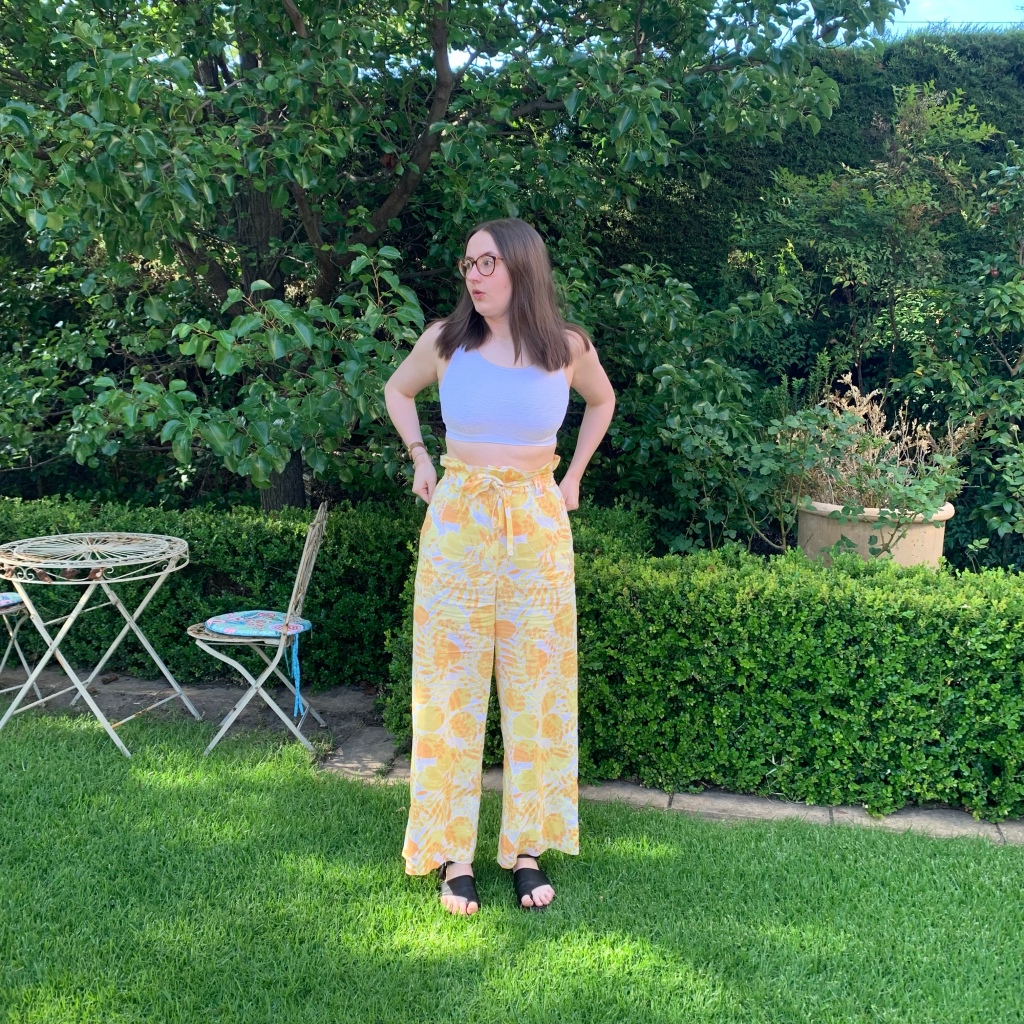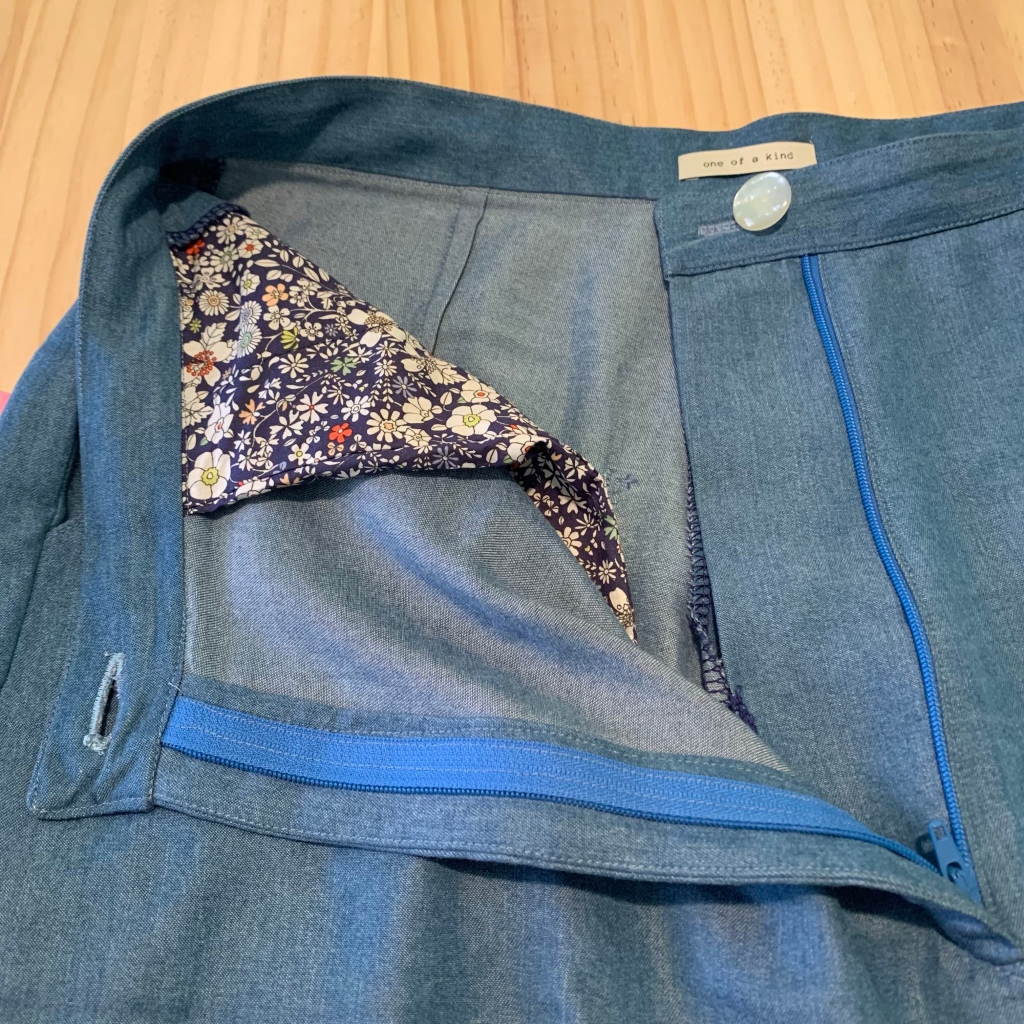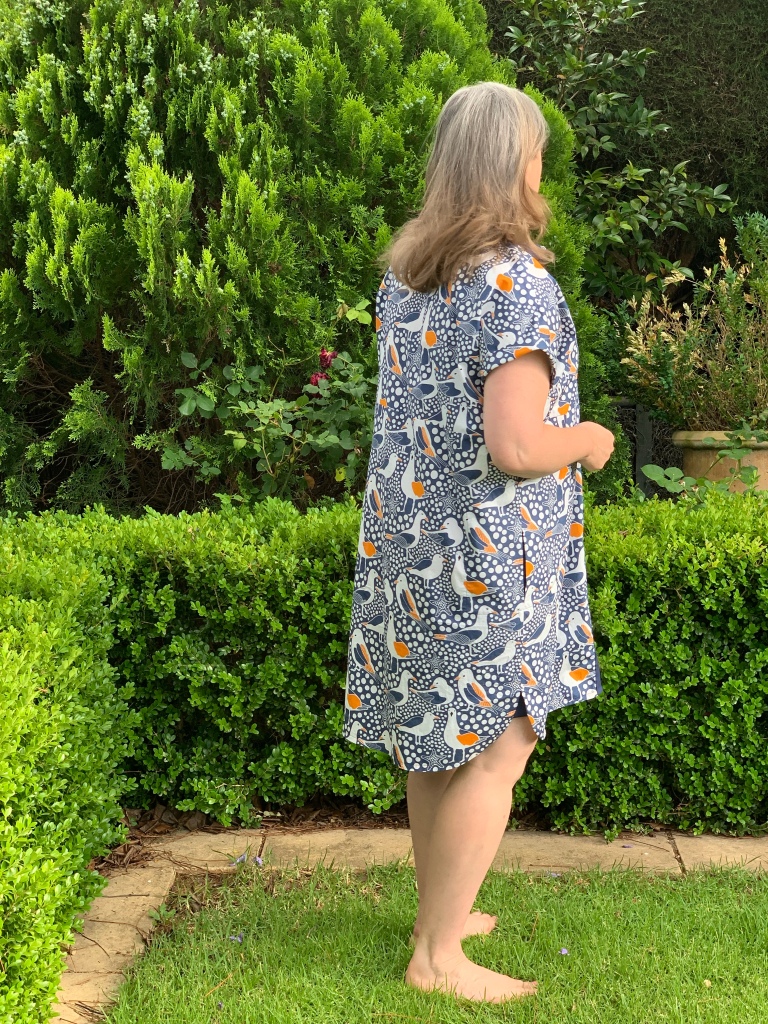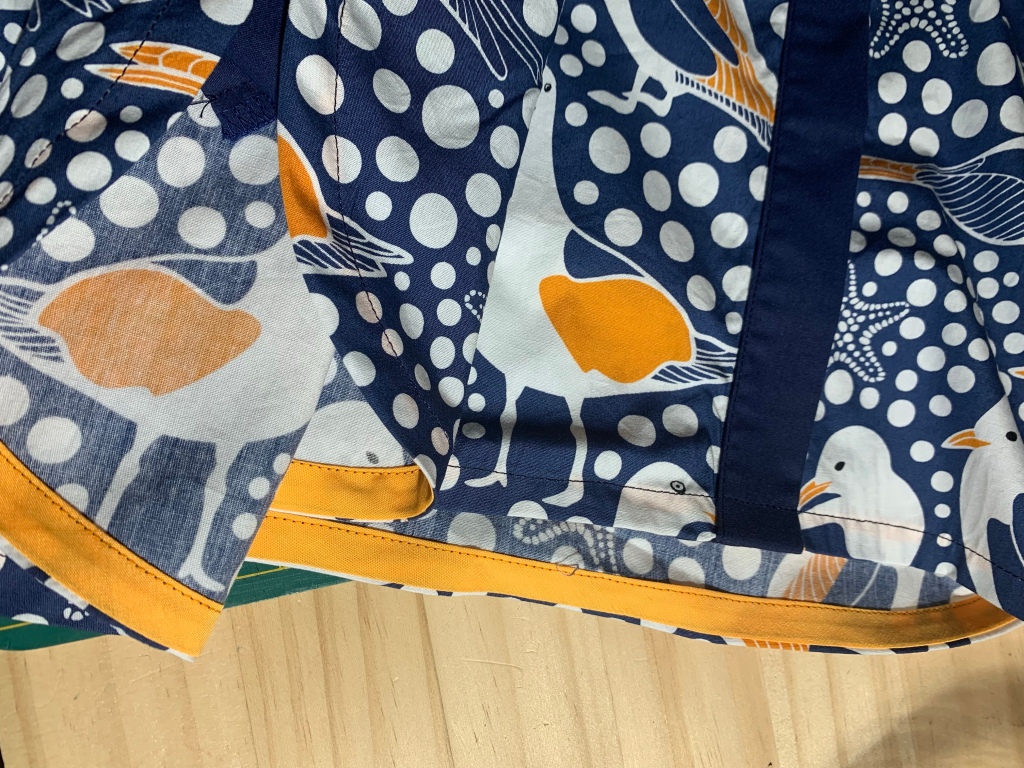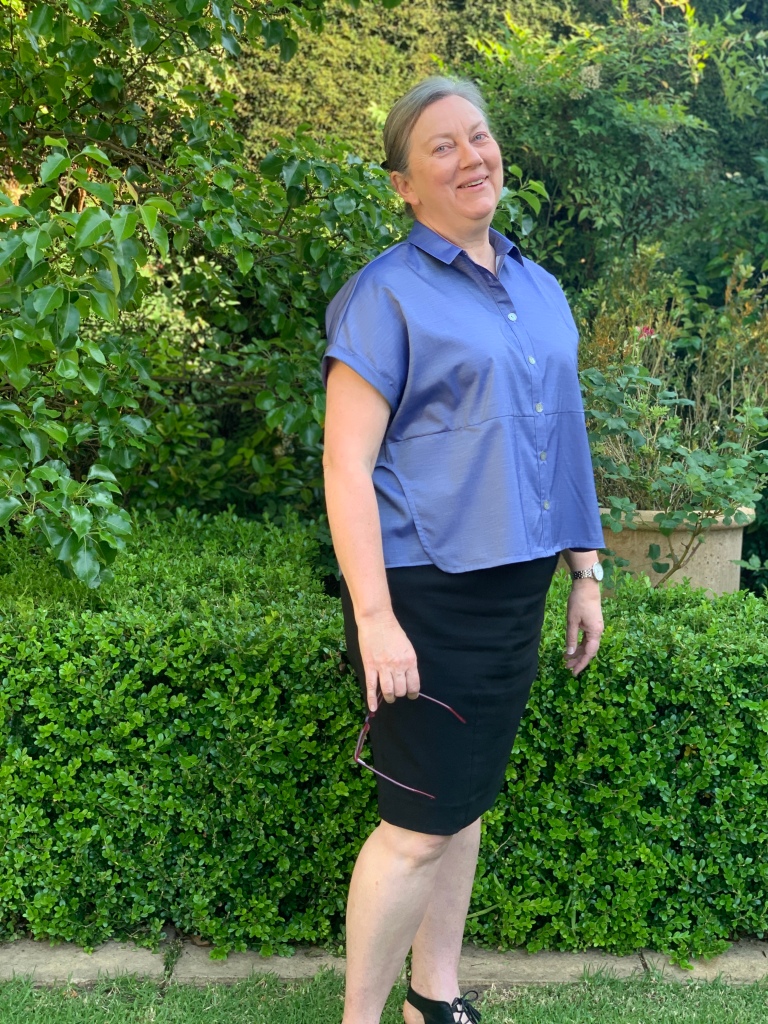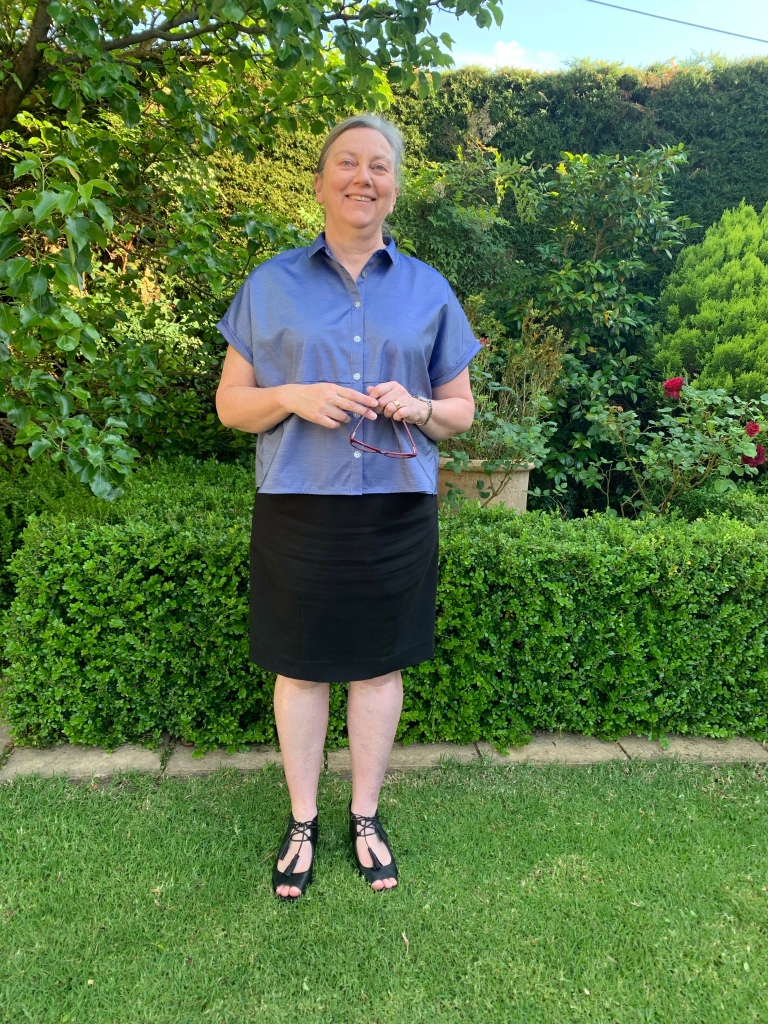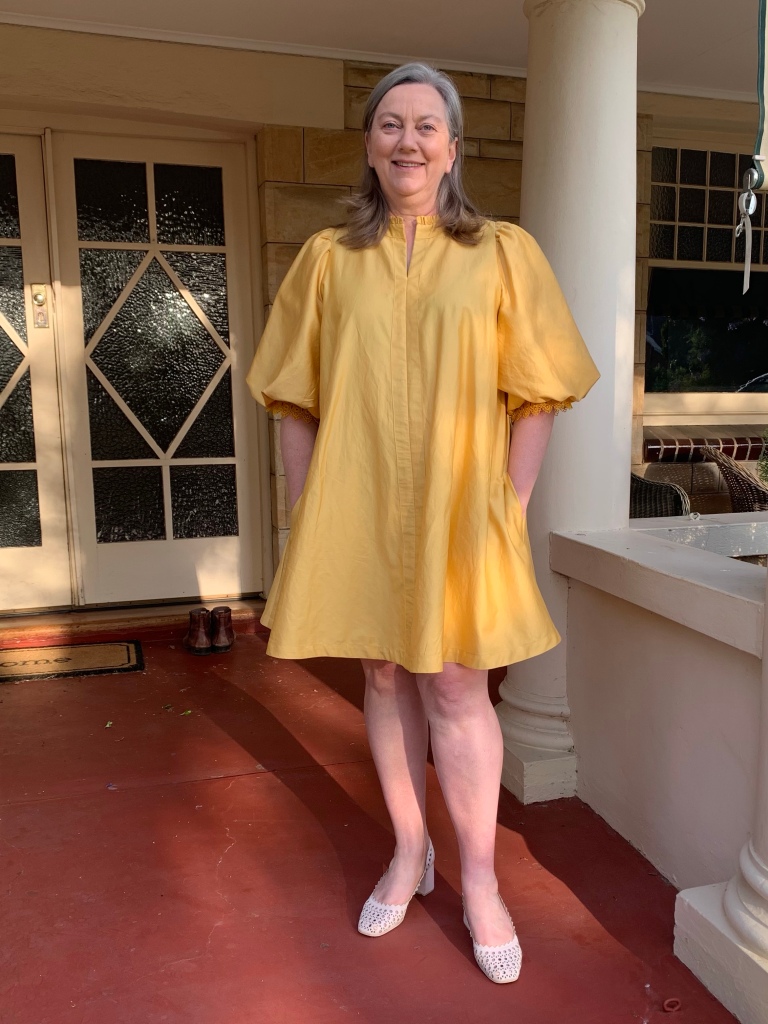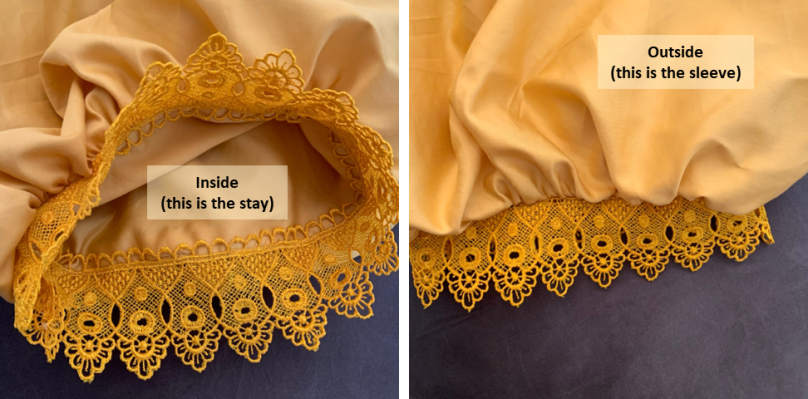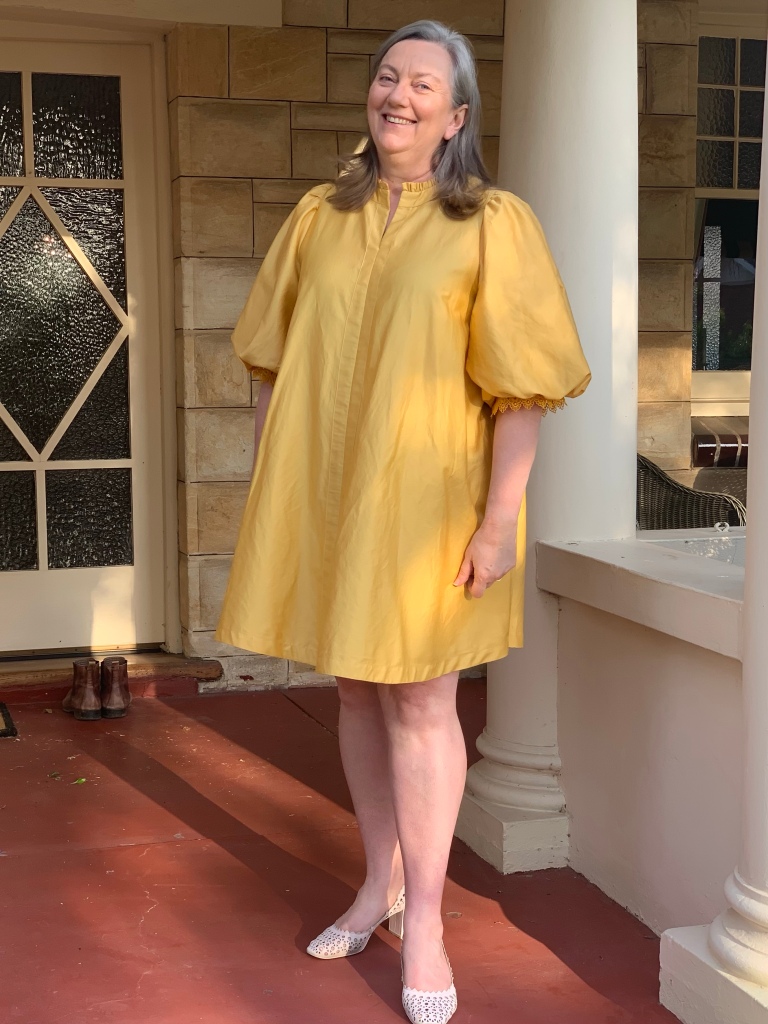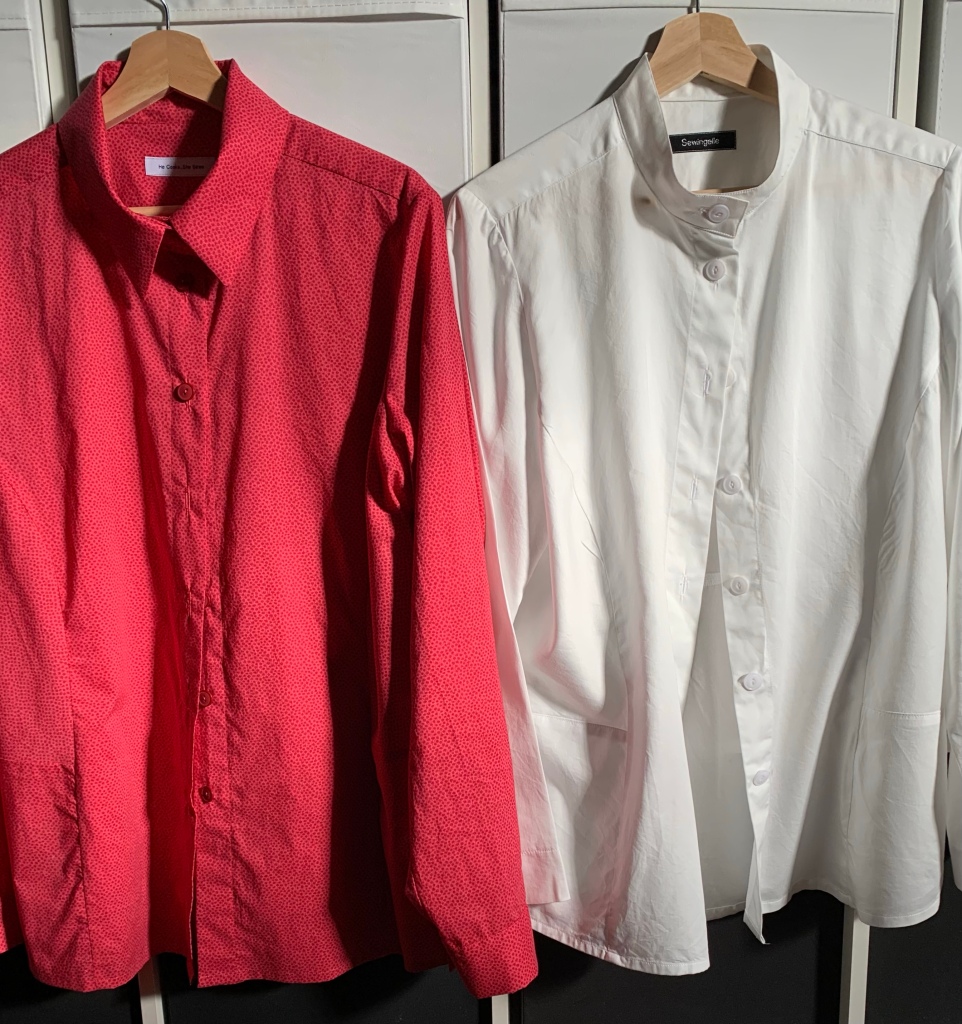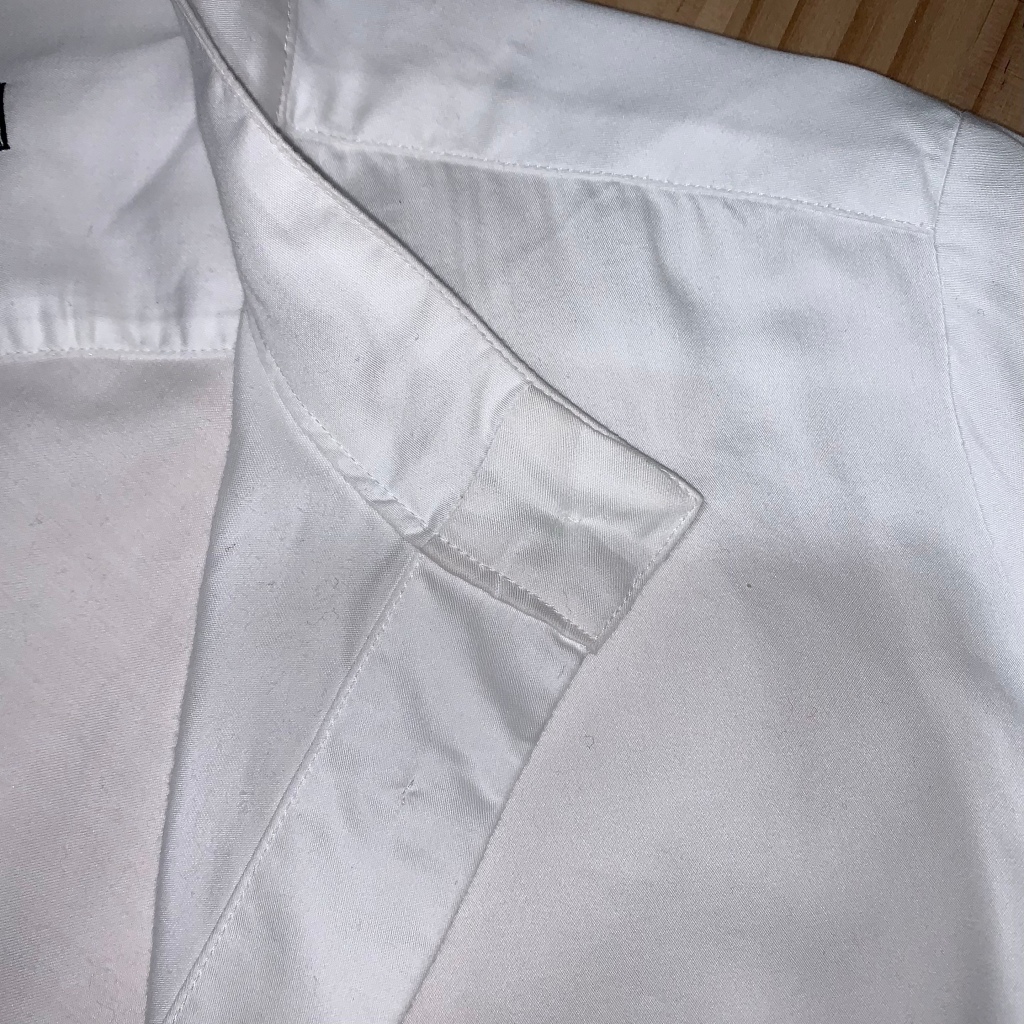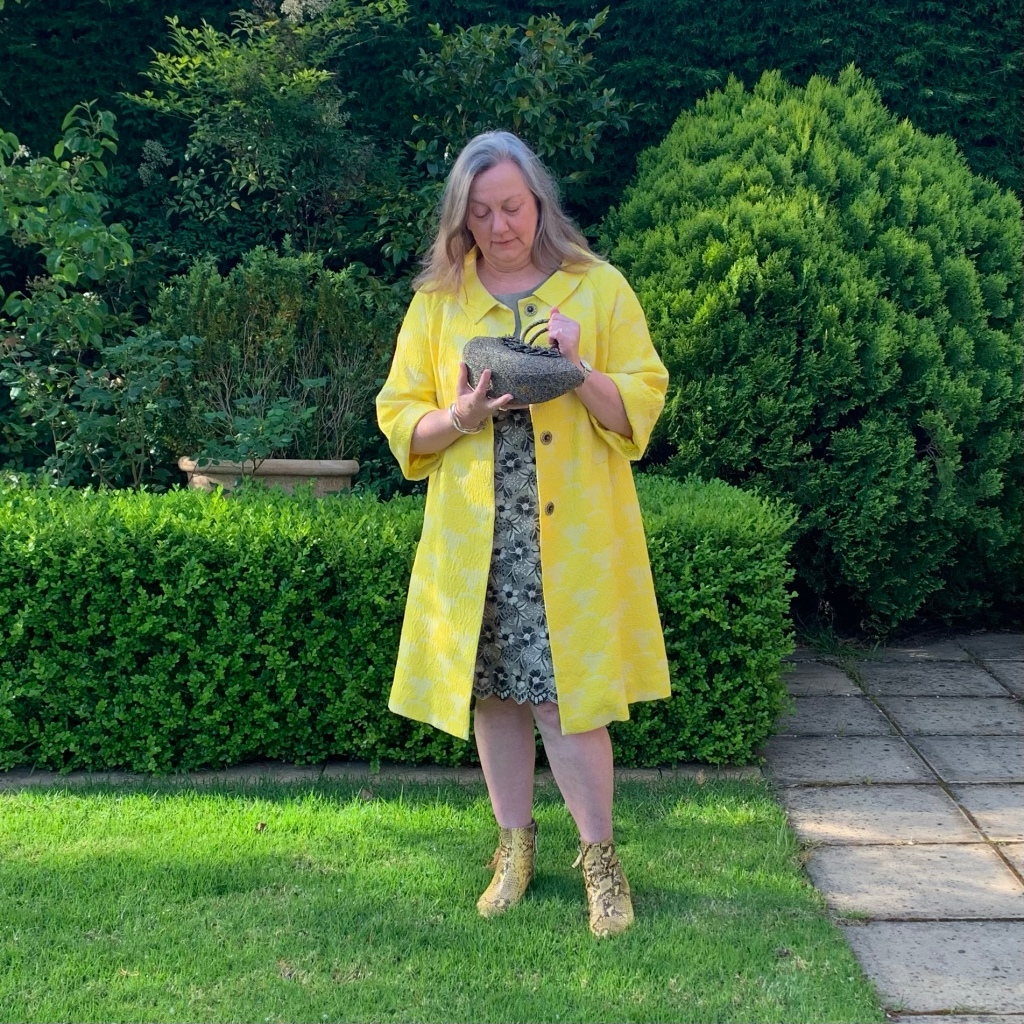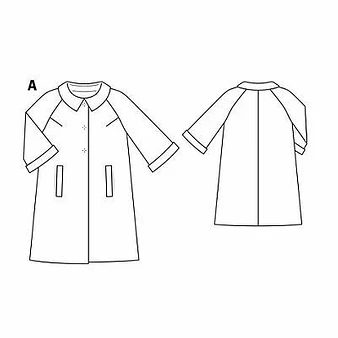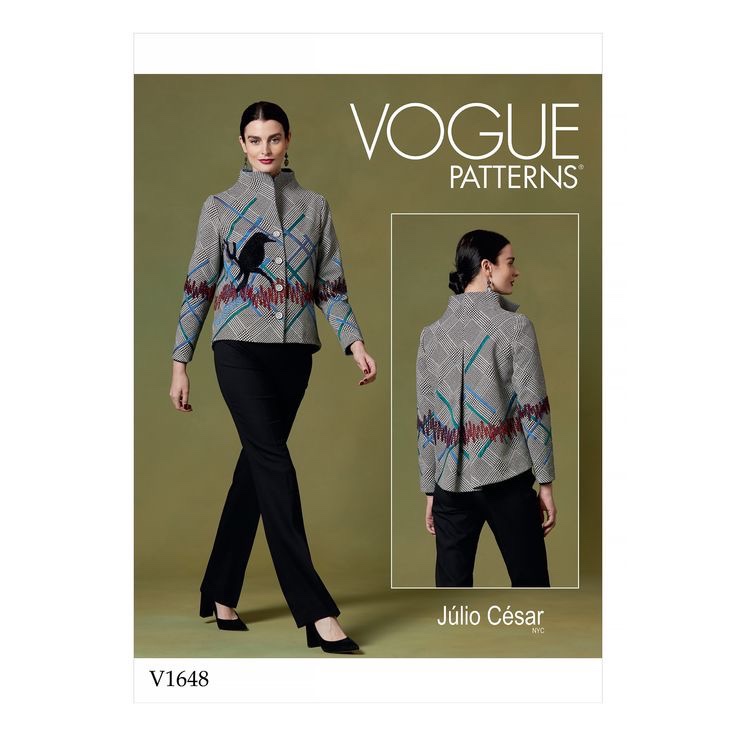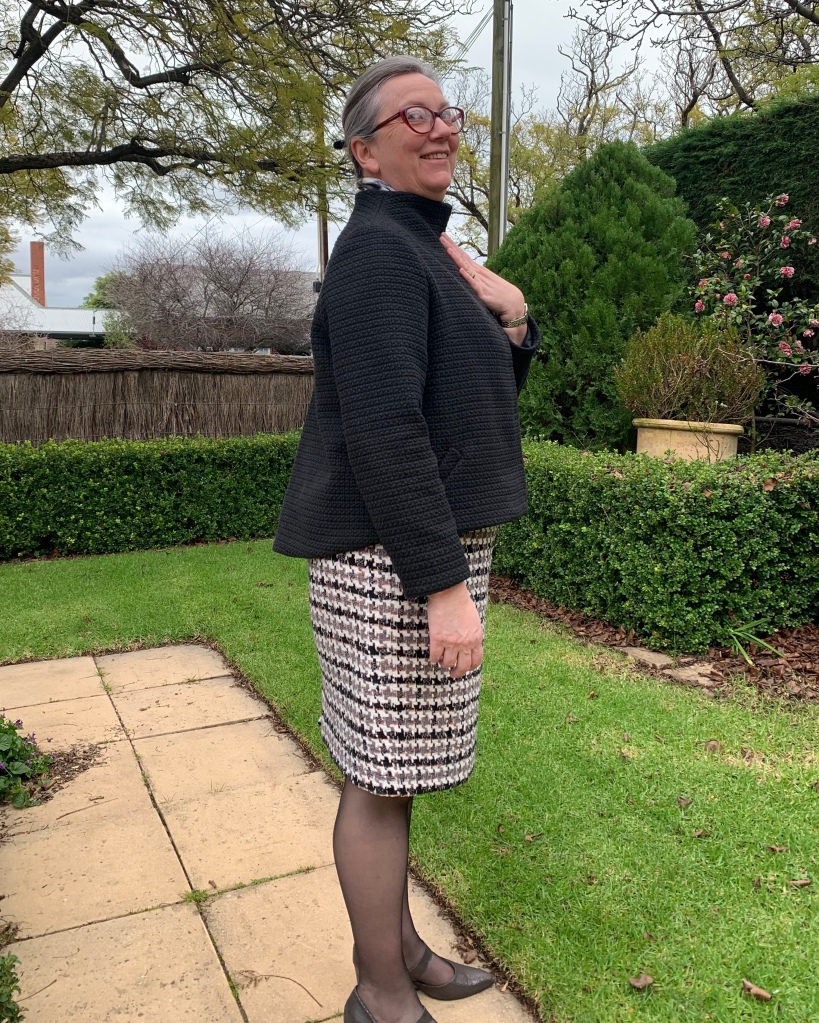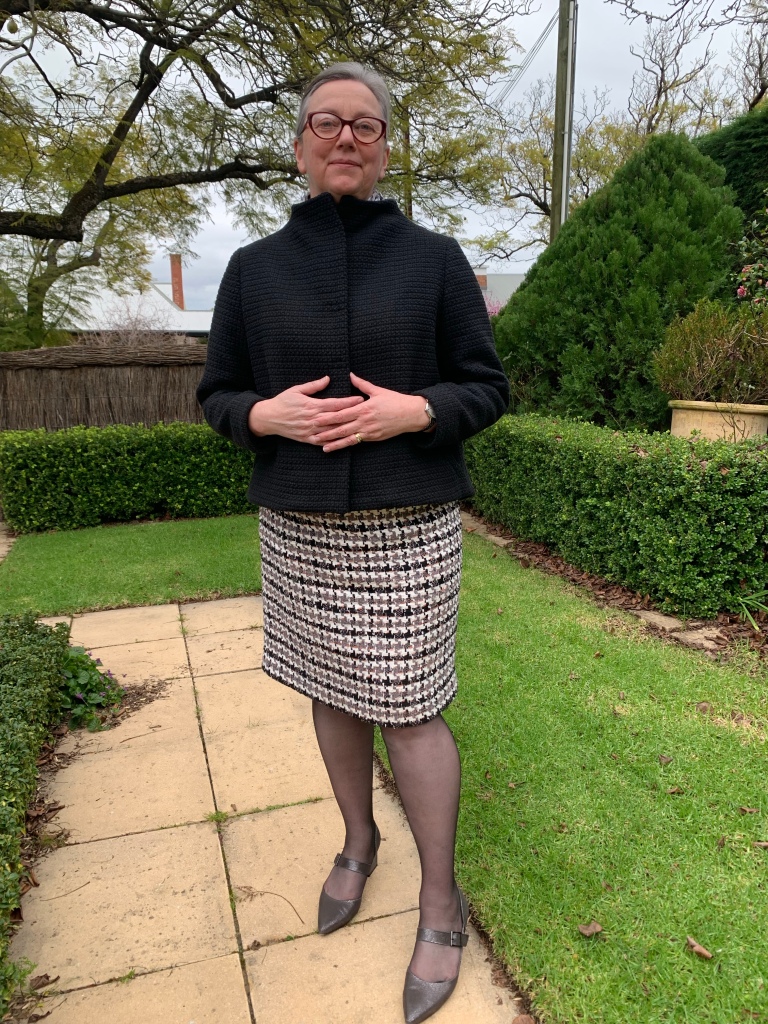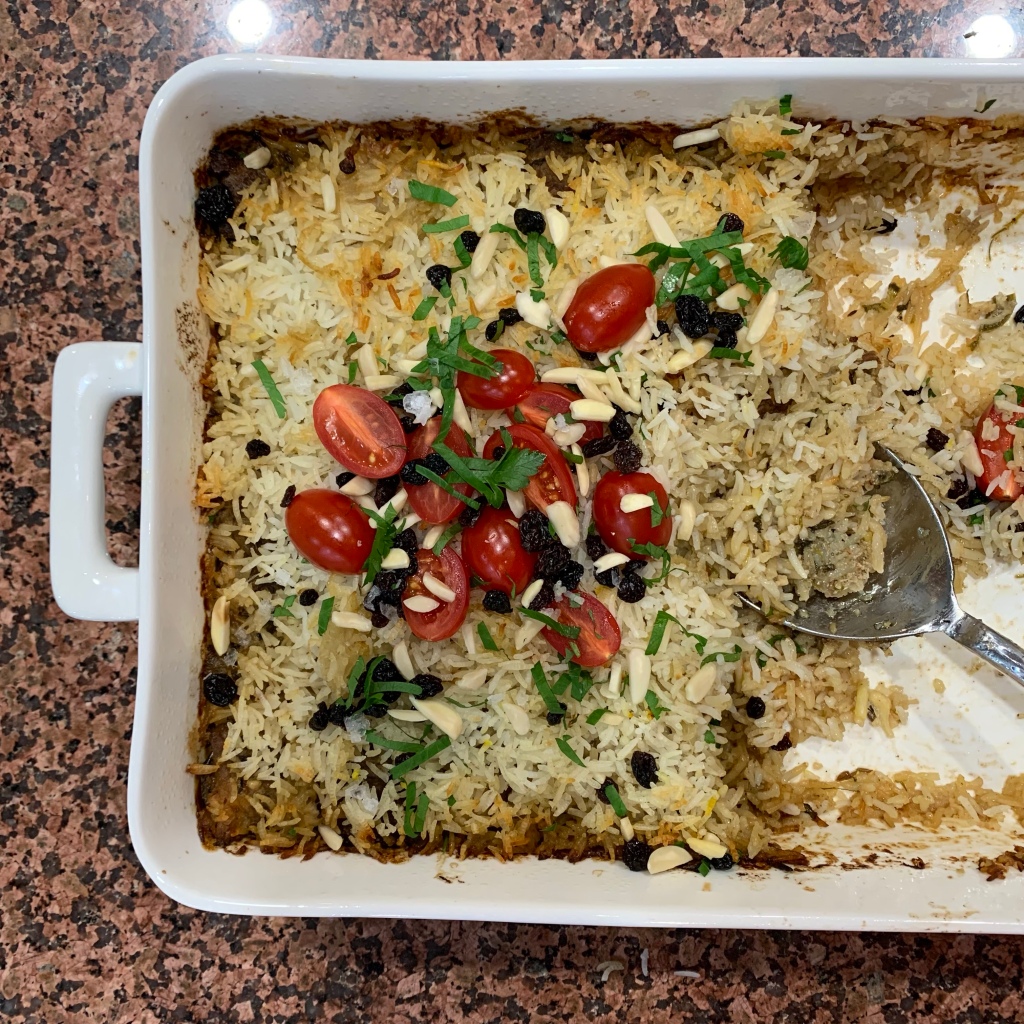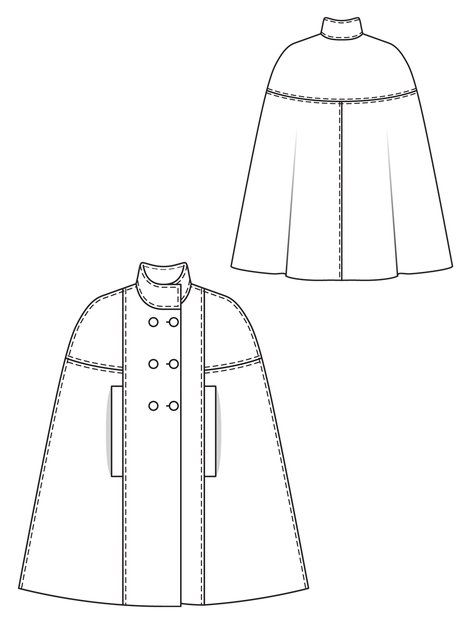I love this pattern. I made it four times in quick succession when I first purchased it. And now this summer I’ve made it three more times over about 6 weeks.
It’s an excellent simple shape for stretch fabrics. Using a woven fabric to face the neck and grown on cap sleeves/extended shoulders is practical and also an opportunity to introduce some whimsy.

My versions are halfway in length between view A and B and this summer I made them in a size 18.
The orange and hot pink one

This is classic Lodo. The fabric does all the work. It’s a viscose nylon spandex woven stretch fabric from Spotlight, my local bricks and mortar store.

I added to the fun with a hot pink woven cotton for the facing, bound with yellow-orange bias binding.
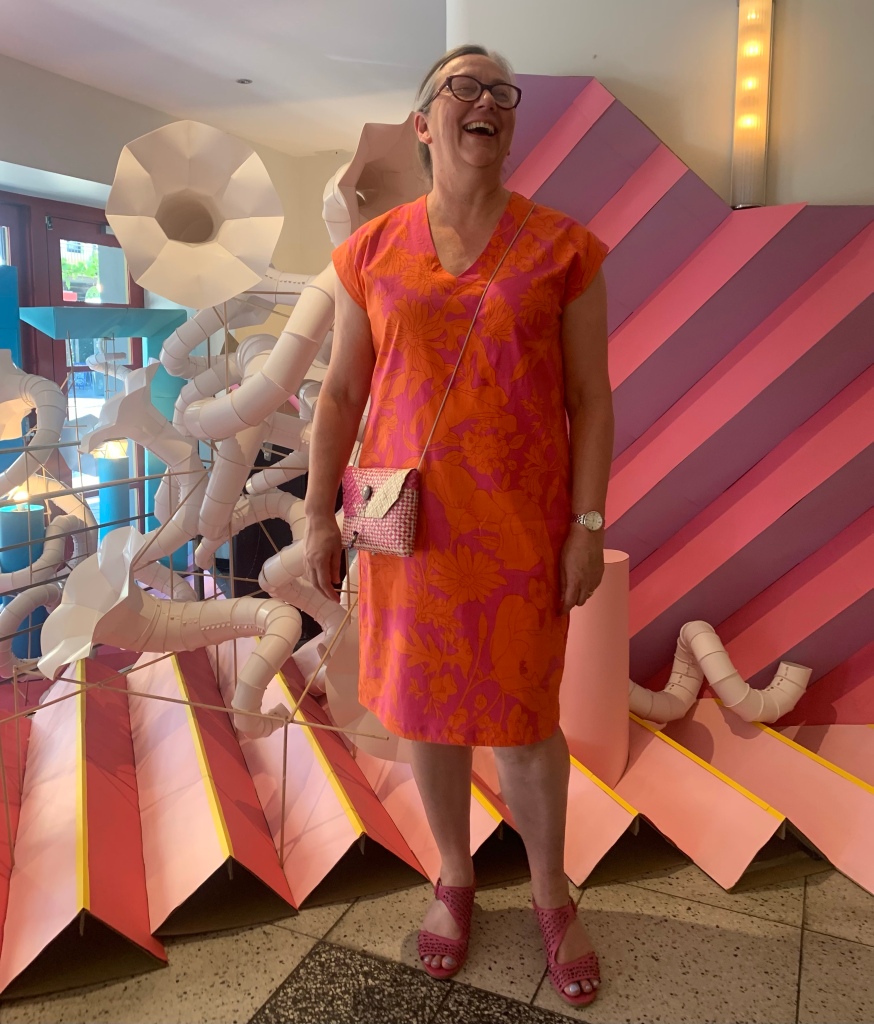
It really is fun!
The navy version with ruffle sleeves

This was an experiment. What happens if I add gathered rectangles to the extended shoulders/grown on cap sleeves?
Will it make a corporate dress look interesting, but in a good and stylish way? Particularly if I use a very corporate-y navy fabric?

I think it has!
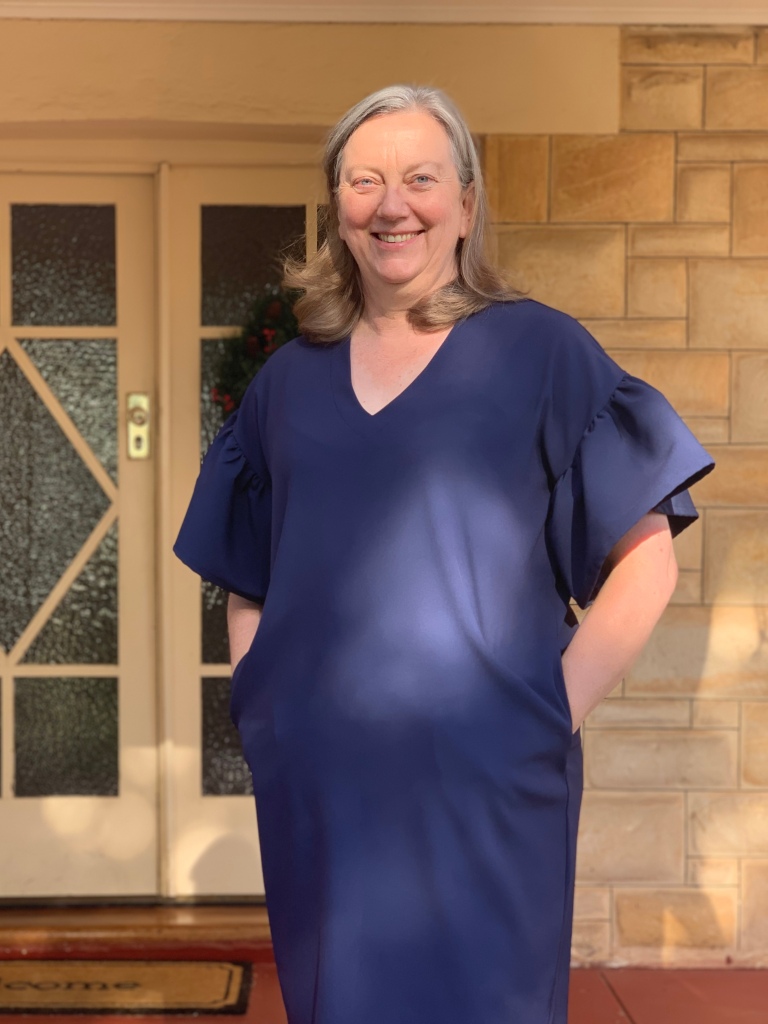
And yes it has pockets.
The fabric is a stretch triacetate suiting from The Fabric Store which I’ve used before and is perfect for corporate wear – some stretch and doesn’t crease.

The “sleeves” are 19cm by 90cm rectangles. Which means the gathering was about twice the length of the extended shoulder/armscye.

I used a fun fabric for the facings of this one too. This was from one of the previous @adelaidesewcialclub fabric swaps. Thanks to whoever donated it!
The red one with balloon sleeves
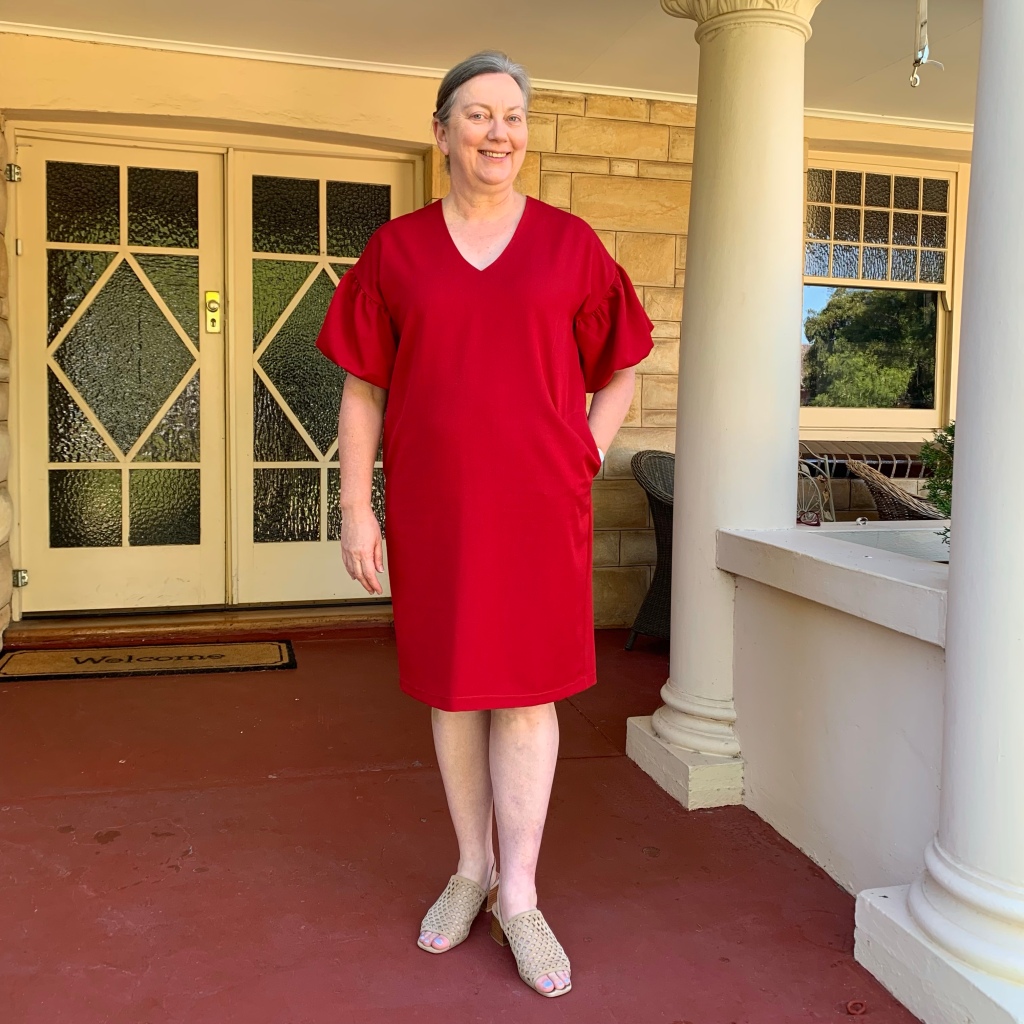
Continuing my sleeve experiments, I incorporated a sleeve stay into this version.

The sleeve was again a rectangle – 70cm x 24cm – a bit less to gather in than the navy ones but deeper. Fabric restrictions dictated the size.
The stay was shaped so that the top was similar to the armscye shape (about 45cm wide), the bottom (where the outer sleeve was gathered back into) was smaller (35cm), the overall height about 5cm less than the outer sleeve and the sides 5cm shorter than the centre.

I wanted to see if this might sit on my arm better.

I’m not sure if it made much difference but it was fun pretending to be a pattern maker!

Pretending is the right word, because adding ‘sleeves’ to this pattern makes the draglines to the bust a bit more obvious, as you can see above.

This version also has pockets. For all of these dresses I made the pockets with an 8cm wide strip of the outer fabric and then the rest in lining or some other woven fabric. This was mainly because I didn’t have enough fabric for full pockets and sometimes because this makes the pockets less thick.
The fabric for this red dress was from emmaonesock and is an RPL stretch garbardine in Valentino red. Another great fabric for corporate wear – crease resistant and easy care. I also have a jacket in this fabric. Probably won’t be wearing them together because of those sleeves!

I faced the neck of this dress with a Liberty remnant and lined it with stretch lining. It’s particularly lovely to wear.
It wasn’t particularly lovely to put the lining in though, because it was an afterthought and there was a lot of finagling to get it to work! Hence the slightly wonky facing/lining seam above.
There’s a lot to be thankful about well drafted patterns and well written instructions. But I have to say that my pattern hacking was enjoyable and I’m happy with the results. What more could a sewist ask?













